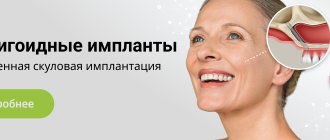The inflammatory process that occurs in the periodontal tissues that surround the tooth root is called periodontitis. Several causes of the disease can be identified:
- untreated caries
- untreated pulpitis
- injury received
- mistakes made in dental canal treatment
The most common causes of tooth root inflammation are problems associated with caries and pulpitis. In any case, treatment should be carried out in several stages. Left to chance, this dental disease can provoke serious general somatic problems, so it is necessary to approach the treatment of tooth root inflammation with all seriousness.
For what reasons can a tooth root become inflamed?
Despite the availability of many effective methods of therapeutic treatment of inflammation under the tooth root, it is often necessary to resort to the use of surgical treatment methods. This is indicated in the following cases:
- Root canal obstruction was detected
- there is a pin or stump tab that cannot be removed without damaging the root
- there are many cysts - perihilar or growing into the maxillary sinus
- there is a perforation (perforation) of the wall of the tooth root or its cavity
- The use of conservative methods of treating root inflammation does not help
Important:
Most often, periodontitis refers to inflammation in the area of the apex of the tooth root (apical, periapical periodontitis). The cause of tooth root inflammation is untimely treatment of caries and pulpitis. Another type of disease, marginal periodontitis, is classified as periodontology; in this case, the lesion spreads to the gums in the cervical part of the tooth.
Causes of inflammation
As a rule, inflammation of the root part of the teeth is provoked by two factors - infection and trauma to the jaw and dental units.
In turn, the development of infections leads to:
- Untimely elimination of advanced caries.
- Incorrect treatment of pulpitis.
- A poorly made and then installed crown, under which food debris penetrates. When they decompose, they lead to the growth and reproduction of bacteria.
- Injuries to the gums due to an incorrectly installed crown or prosthesis. More often, these areas are visible as bleeding, scarlet-red, and swollen.
- Frequent diseases of bacterial sore throat.
- Chronic sinusitis, provoking the growth and reproduction of pathogenic flora.
In all of these cases, the root also becomes inflamed, since pathological processes are transferred to it.
As for injuries, as causes of pathology, these are:
- An incorrectly filled tooth, on which the load increases when chewing.
- Fractures that occur after injuries to the jaw, incorrectly installed crowns.
- Increased tooth mobility that occurs due to injuries to the nerves or vessels of the root canal.
- Excessively high crown restored from composite materials.
- The use of “old” antiseptics to treat canals that are inflamed (we are talking about arsenic).
Regardless of the cause of the development of the inflammatory root process, the patient experiences obvious discomfort and constant pain.
Symptoms and treatment
Periodontitis can be chronic and worsen. The characteristic symptoms that are revealed during examination by a dentist and as a result of anamnesis vary depending on the stage of development of the disease.
Exacerbation of periodontitis is characterized by the following signs and complaints from the patient:
- Regardless of the time of day, you are constantly haunted by a monotonous, equally intense, aching toothache.
- When pressing on the tooth, the pain intensifies
- There is a feeling that the tooth has “grown” - it interferes and does not allow the jaws to connect, since any attempt to do this ends in a painful attack
- The accumulation of purulent contents provokes pulsating pain, radiating along the branches of the trigeminal nerve
- Feeling worse, weakness appears, temperature rises
- Submandibular lymph nodes may become enlarged
Exacerbation may be accompanied by serous and purulent discharge. In case of purulent periodontitis, the doctor is first faced with the task of getting rid of pus: the tooth cavity is cleaned, the canals are treated.
Symptoms of tooth root inflammation in chronic form are not so pronounced:
- The tooth does not hurt constantly, but when pressing, unpleasant pain occurs
- A fistula may occur with frequently exacerbating granulating periodontitis. In this case, under the influence of exudate, the tissues “melt” and the exudate exits through a hole in the gum located in the area of the root apex. In the remission stage, such a formation looks like a changed area of the mucous membrane
- The presence of bad breath (halitosis) is also a sign of chronic apical periodontitis. Microorganisms that cause caries contribute to the destruction of hard tooth tissues, enter its internal cavity and provoke tissue death in the pulp, which leads to the accumulation of necrotic masses, which are the main factor of halitosis.
The chronic form of tooth root inflammation is treated conservatively in most cases; only in the most advanced cases is surgery prescribed. Modern standards of all medicine and dentistry in particular consider any disease comprehensively, that is, they do not treat fistulas, cysts or granulomas separately. In the treatment of tooth root inflammation, antibiotics, painkillers and other medications are used.
Types of chronic periodontitis
Studies of the clinical picture of the possible course of chronic periodontitis and morphological signs made it possible to identify the following types:
- Granulating
With this form of the disease, under a microscope, a noticeable thickening can be observed in the apical part of the tooth root. There is a change in the surface of the periodontium, it becomes uneven. Over time, granulation tissue grows, which causes resorption of bone tissue in the area of inflammation. This process is often accompanied by the appearance of purulent foci, which provokes the appearance of fistulas. In some cases, soft tissue adjacent to the site of inflammation undergoes granulation. This causes the formation of granulomas of various types (submucosal, subperiosteal, subcutaneous), after opening which, fistulas appear on the face and oral cavity, and unaesthetic scars appear at the site of their healing.
Patients experiencing granulating inflammation report pain when chewing solid food, aggravated by pressure, as well as periodic exacerbations of painful conditions.
- Granulomatous
One of the forms of periapical inflammation, characterized by the formation of granulation tissue in the area of the root apex. The maturation of this tissue along the periphery provokes the appearance of a fibrous capsule that degenerates into a granuloma. Depending on the structural features, simple, epithelial and cystic granulomas are distinguished. Quite often, this form of the disease occurs as a consequence of granulating inflammation.
The course of the disease can occur according to various scenarios. Sometimes the granuloma grows slowly or does not grow at all. In this case, it usually does not cause any discomfort and is discovered by chance during an X-ray examination.
In other patients, the granuloma may enlarge, most often coinciding with exacerbations of chronic periodontitis, provoking changes in the granuloma tissue.
- Fibrous
It is characterized by the formation of a limited focus of inflammation caused by the spread of fibrous tissue. Most often this occurs after treatment of the forms of periodontitis described above, but sometimes the fibrous form occurs independently.
Often, fibrous inflammation is accompanied by excessive formation of cement, and in some cases, sclerosis of adjacent bone tissue.
An X-ray examination allows you to determine the form of chronic periodontitis. It is very important to correctly differentiate different types of disease, since the effectiveness of treatment directly depends on this.
Relieve pain before going to the doctor
For any form of periodontitis, it is necessary to make an appointment with a doctor, but often the aching tooth “does not want” to wait for the appointed time and hurts unbearably. Taking a pain reliever will help relieve the condition. For toothache, experts advise taking medications that are most optimal for such cases. The pill will not cure, but it will relieve the pain. This does not mean that you can postpone a visit to the doctor - after the pill wears off, the pain will return, so a trip to the dentist should not be postponed or put off “for later”.
Inflammation after tooth extraction - treatment
When there is no way to save a tooth, there is only one option left - to remove it. When removing, anesthesia is used, when its effect wears off, the tooth socket may ache, if the pain does not disappear within 2-3 days and painkillers do not help, most likely the inflammatory process of the tooth socket has begun. What could be causing it:
- Injury during tooth extraction;
- Foreign particles entering the hole cause inflammation;
- Improper hygiene;
- Infection in the hole.
To relieve inflammation after tooth extraction, you should not self-medicate; in this case, you should definitely consult a doctor.
Self-medication in this case can lead to the development of abscesses and sepsis. The doctor will correctly select the right antibiotic and dosage of the medicinal drug, an antiseptic solution for rinsing the mouth.
Features of the treatment of periodontitis with fistula
The inflammatory process can occur with complications, one of them is odontogenic fistula. More often it occurs with granulating periodontitis. These are holes in the mucous membrane, formed as a result of the proliferation of granulations and destruction of the tissues surrounding the tooth. Through the resulting fistula, pus is released, which is formed during inflammation under the root of the tooth.
To some extent, the resulting fistula helps to reduce the pain experienced by a person: the purulent contents do not linger in the tissues, but come out, easing the course of the disease. But you should not delay the examination by the dentist and the appointment of treatment - this is fraught with tooth loss.
The fistula will not disappear on its own; it is necessary to remove the cause that caused it – inflammation in the periodontal tissues. The treatment regimen for root inflammation is standard in all cases:
- thorough mechanical cleaning of the canals
- carrying out disinfection
- temporary filling with a drug until inflammation in the periodontium disappears
In particularly advanced cases, overgrown granulations are surgically removed.
Is it possible to do without going to the dentist?
A visit to the dental clinic is the only way to get rid of inflammation and, if possible, save the tooth. The sooner the drugs are taken, the higher the likelihood of a favorable outcome. Otherwise, the patient risks getting the complications described above, among which tooth loss is not the most unpleasant outcome.
Timely detection of the disease is the key to success. Don't rely on home treatment. Without the intervention of a dentist, tooth inflammation can only progress, causing more and more dangerous consequences over time.
Treatment methods
As already noted, in modern dentistry, preference is given to conservative treatment. However, it is often impossible to fully treat tooth root inflammation without surgical intervention.
Conservative treatment
This is a complex methodology that includes several types of activities:
- mechanical cleaning of channels
- disinfection of canals using medications
- Temporary filling with medication
Conservative therapy includes the prescription of antibiotics for inflammation of the tooth root.
Surgery
Involves the operation:
- removal of 1/3 of the root tip
- removal of part of the root (hemisection)
- removal of a tooth from the dental socket
Important: Doctors try to save teeth using all conservative treatment methods available today, since they are successful in 70-90% of cases.
Treatment at home
In case of inflammation of tooth roots, home remedies or your own efforts are not enough. Since the process occurs hidden, only a doctor can determine the intensity of the lesion and later select treatment tactics. Self-administration of any antibiotics, anti-inflammatory drugs, and even more so the use of traditional therapy is strictly prohibited. Ignoring the problem and trying to treat root inflammation at home can lead to the formation of a purulent cyst, its further rupture and, as a result, sepsis.
It is worth considering that the roots of the teeth are located as close as possible to the brain. Therefore, any infection, pus, or serous contents that enter the bloodstream here quickly reach the brain vessels. No folk remedies (compresses, rinses) used at home will help here.
The only acceptable drug for home use is a local analgesic. To eliminate pain, you can take medications such as Ketanov, Ketalong, Analgin. After this, you should consult a doctor as soon as possible.
Stages of periodontitis treatment
How many times you will have to come to the doctor to treat inflammation at the root of the tooth depends directly on the form of the disease, in remission or during an exacerbation. The course of treatment is also influenced by the method chosen by the doctor. Often, therapy requires a course consisting of several stages of treatment and a visit to the dentist. Until the inflammatory process is eliminated, the tooth cannot be filled, so you will have to visit your doctor several times:
- Preparatory stage. Diagnosis of the condition of the tooth root using x-rays
- When removing the old filling, the tooth is drilled to open access to the canals and remove the nerve
- Channels are expanded to the required size
- Treating the canals with antiseptic drugs and applying medication
- A temporary filling is installed
- At the next visit, the temporary filling is removed and the canals are treated with antiseptic. This stage can last for weeks, or even months - the process will be repeated until the inflammatory focus is completely eliminated and the number of visits will depend on this
- A permanent filling is placed and x-rays are taken again for control.
In addition to the procedures performed in the clinic, the patient must undergo antibacterial and anti-inflammatory therapy. At home, he should do warm rinses with special antiseptic solutions (herbal, medicinal - as recommended by a doctor).
Prevention
- Preventing any disease is easier than treating it afterwards. This is a true statement, so regular dental checkups should become a good habit. If you live in St. Petersburg, Krasnodar, Novorossiysk or Moscow, then you can contact any of the branches of the INTAN dental network for the best qualified help
- Also, timely treatment of caries and pulpitis will help to avoid periodontitis and its attendant complications. The cost of treating them will be higher and more time will be required.
- In case of acute inflammation at the root of the tooth, a quick visit to the doctor and timely treatment will relieve complications and prevent the process from becoming chronic.
- If caries is detected at any stage, you need to make an appointment with a doctor as soon as possible, undergo an examination and prescribed treatment (remove damaged tooth tissue, filling)
- Compliance with hygiene rules (brush your teeth twice a day with a properly selected brush and toothpaste, use dental floss)
- Diet is important. Dairy products and protein-rich foods, fresh vegetables and fruits should always be on the table. Minimize the consumption of sugar-containing foods and sweet carbonated water.
- Visit your doctor every six months for a check-up and professional teeth cleaning
Following simple rules for oral care will help you avoid inflammation of the tooth root and all the troubles associated with it.









